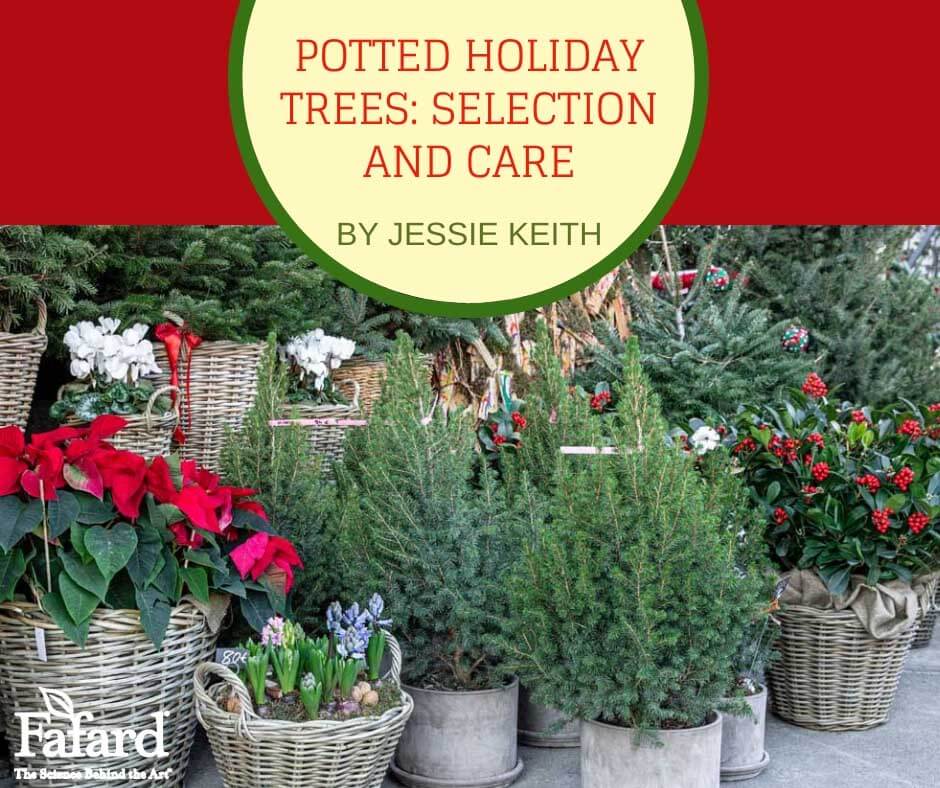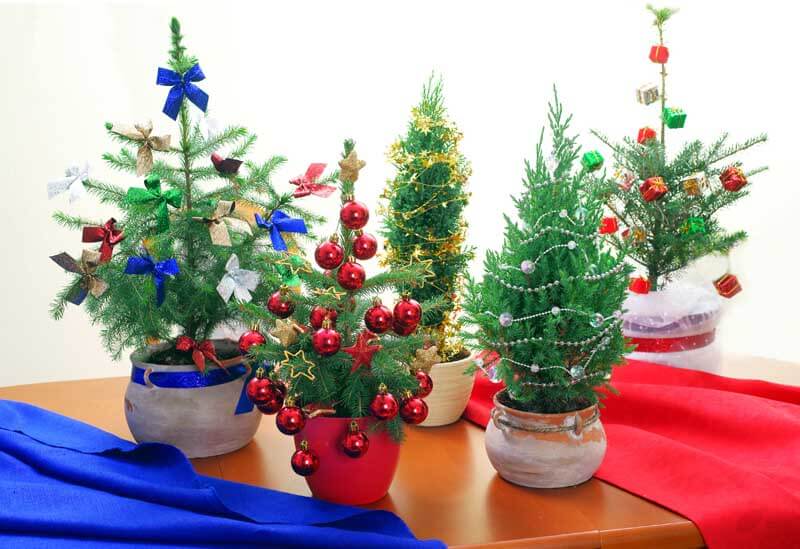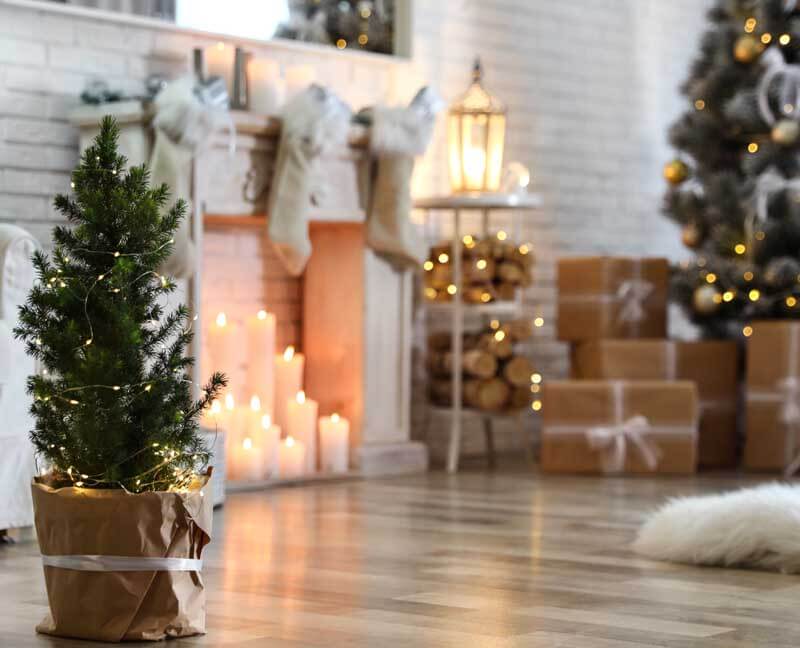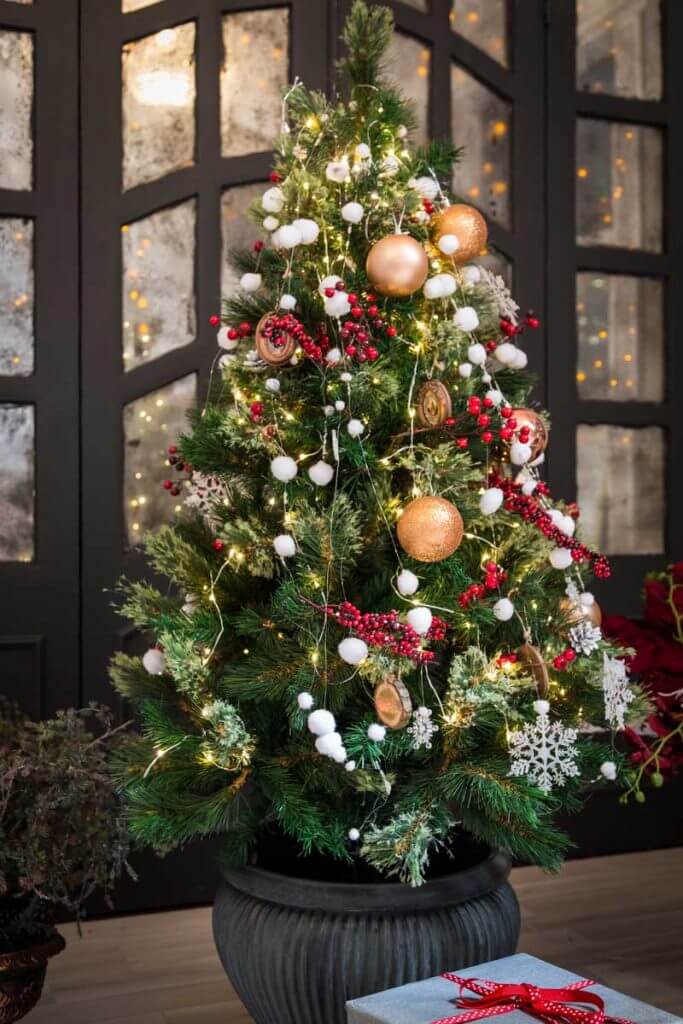
Small or large potted holiday conifers are fragrant, fresh and provide living beauty in the home, but which should you choose for outdoor planting, and how do you care for them after the lights and glitter are shed? The right care will ensure their longterm health. Here’s how to give them what they need for success.
Know Your Trees
When picking a live tree, know what kind it is, and make sure that it will fit into your landscape and grow well where you live. Don’t be fooled by the initial size. Many potted trees sold as tiny specimens grow very large. Truly compact trees sold during the holidays, such as dwarf Alberta spruce (Picea glauca ‘Conica’, USDA Hardiness Zones 3-6) or lemon cypress (Cupressus macrocarpa ‘Wilma’, Zones 7-10), can be planted in large, outdoor containers for several years. But, those that mature to a large size must be planted in the ground. So, you must know your trees.

Here are some of the top holiday trees sold in North America. Each grows best in certain areas of the country. All of the full-sized evergreens mentioned need lots of space, sunshine, and well-drained soil.
Firs

Chrismas firs have soft, flat needles, a perfect conical shape, dense branching, and wonderful wintery aromas. They make good landscape specimens, where they are hardy, and all grow to become large, regal trees.
Balsam fir (Abies balsamea, Zones 3-7): The remarkably hardy balsam fir is a fragrant, soft-needled evergreen that grows best in colder climates with cooler, more moderate summers. It has a dense, conical habit and standard forms can reach a whopping 50 to 75 feet when fully mature, so don’t plant one in a small yard or close to the house.
Frasier fir (Abies fraseri, Zones 4-7): Comparable in growth, habit, and fragrance to balsam, Frasier fir is an Appalacian species from the southeastern United States that can take warmer summers, but because it grows in the cooler mountains it cannot take the intense heat of the Deep South. At full size, it reaches 30-50 feet.
White fir (Abies concolor, Zones 4-9): A fir for the Midwest and alpine West, white fir is more tolerant of areas with warmer summers. It has a conical habit with dense branching and soft, attractive, upright needles with a silvery cast. When mature, it can reach up to 60 feet.
Douglas fir (Pseudotsuga menziesii, Zones 4-8) is not a true fir, despite its name, but the pine is a good choice for those living from Pacific Northwest down to the Southwest. Soft-tipped needles cover its branches and when grown as a specimen tree it reaches 40-80 feet and has a broadly conical habit with more open branching than that of true firs.
Pines

White pine (Pinus strobus, Zones 3-8) is one of the most common native pines grown for Christmas trees. It is distinguished by its long, very soft needles, which some homeowners really favor. It makes a good landscape tree with open branching and can reach 50-80 feet.
Scots pine (Pinus sylvestris, Zones 3-7) is still sold but has fallen out of favor as a Christmas tree because of its painfully prickly needles. As a yard tree, it is equally undesirable because it’s prone to many pests and diseases. This is one to avoid.
Spruces
Dwarf Alberta spruce (Picea glauca ‘Conica’, Zones 3-8) is the most common potted holiday tree and is almost always sold as a pre-decorated, miniature for indoors or outdoors. After the holidays, it can be planted in pots for or in the garden. Eventually, dwarf Alberta spruce can reach 10 to 13 feet high but is very slow-growing, so it can be grown in pots for some time before planting in the ground.
Indoor Care and Transition

All of these evergreens need cold winter weather to grow well, so bringing them into the warm indoors for too long can be detrimental to their health. Keep them in a cool garage or covered patio before bringing them inside. Once indoors, make sure that you place a basin below the pot for watering and keep the tree well-irrigated. Maintaining a cooler room temperature will reduce stress. Don’t keep them inside any longer than ten days, a week is better.
After the holidays, remove all decorations and take your tree outside. Very hardy varieties can remain in their pots if kept close to the home. Just don’t let the pots dry out. If the ground is warm enough to be worked, plant your tree straight away.
Planting

All of these conifers like their soil to be slightly acid, rich in organic matter, and well-drained. Black Gold Canadian Sphagnum Peat Moss and Fafard® Premium Natural & Organic Compost are the best amendments to use at planting time. (Click here for the Morton Arboretum’s tree-planting instructions.)
Potted holiday trees are a long-term investment. While they decorate your home and bring joy to your family, care for them well. And, once planted, they will reward you with continued outdoor beauty for years to come.











